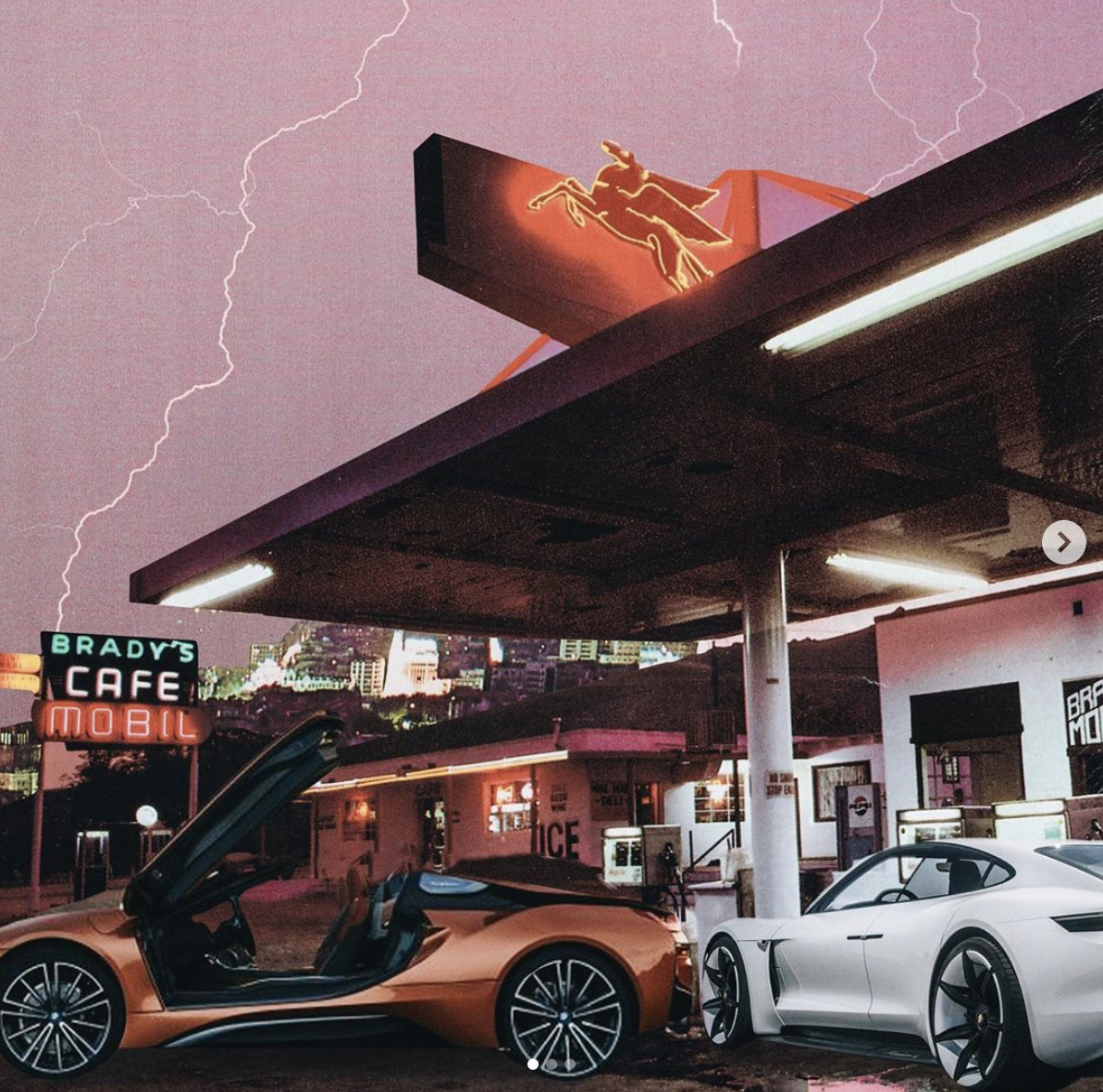
ELLE, August, 2019 (PDF)
The clunky 'green' car stereotype is over, with a new breed of luxury electric vehicle entering as sophistication redefined.
“May you live in interesting times.” Six words, appropriate for 2019. Said to be a Chinese curse, the phrase actually refers to war as a disrupter. It means that those fond of war (or “interesting times”), were fond of change; and those fond of change, start wars. Perhaps this is why millennials are always causing so much outrage – we adore change.
So far, our disruption has “ruined”
marriage, the 9-5 workday, oil, golf and cars. But when it comes to the latter three, the automotive industry has been the one to clock our eye-rolls and shift stance. To start, golf clubs, once the standard boot measurement and a symbol of wealthy-dad culture, have been replaced by suitcases in gen Y-tuned cars; and when it comes to the liquid remnants of prehistoric animals, sustainable tech is here, and it’s sexy. Enter: the new electronic vehicles (EVs).
Earlier this year, Jaguar dropped the world’s first luxury EV from a major manufacturer, the handsome I-Pace. Unlike Lexus, BMW or Porsche, Jaguar isn’t a leader in electric technology, but it rolled the dice, following Tesla’s suit of turning the idea of the typically unsexy EV into an object of desire. Like many early adoptions, it’s a problematic space. Australia continues to be awkwardly behind the rest of the world in EV uptake. In America, Tesla’s Model 3 outsold the competition; the UK has banned the sale of new petrol and diesel cars by 2032 with all new cars to be emission-free by 2040; China has become the world’s leader in EV production and in Norway, 58 per cent of all new cars are electric. Then there’s the state of our publicly available charge. In Switzerland, you can supercharge a performance EV in 10 minutes, while most charging stations in Australia can take hours – like filling your tank with a tear dropper.
Despite the Liberal government’s lack of stance on sustainable mobility, the industry is forcing its hand and change is afoot. Start-ups like Chargefox and Jet Charge are installing roadside power plugs around the country (including European-standard superchargers) and apps like Everty and PlugShare help you find the closest one. In fact, the entire industry, including car companies, energy suppliers and start-ups, banded together to form the Electric Vehicle Council which lobbies and advises government officials on new EV policy.
As for the cars? Luxury EVs are arriving thick and fast to join the mass market brands. Soon, Audi and Porsche’s carbon neutrally-produced flagship EVs, the stylish e-tron SUV and swift Taycan sedan, will land. BMW has pledged to offer an electrified variant (either hybrid or battery-powered) of every model. For city dwellers, MINI has entered the space with a cool hybrid Countryman and a fully-electric MINI is en route. Even James Bond’s go-to fuel- guzzler, Aston Martin, is confident it can match the emotion of a roaring V12 engine with an electric one in the new Rapide E saloon. It aims to tempt its highly traditional customer, while capturing the enviro-conscious millennial who wouldn’t be caught dead pumping petrol – at least from a brand association perspective.
Technology always trickles from the top. So even if you can't afford a $119,000 Jag, it matters. Only a few years ago, one had to cough up a house deposit to get the lane assist or emergency braking tech now found in entry-level hatchbacks, so these stylish performance EVs are the precursors to what we will all soon drive. Even if our government sits on the fence, the pieces are in play. In place of the thirsty and loud cars of yesterday? A new dawn of sleek, environmentally-woke wizardry, hyper-connected technology and a zen silence. The car isn’t dead, it’s just that the new status symbol isn’t a bonnet trophy, but a lightning bolt.
